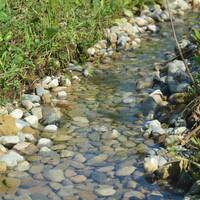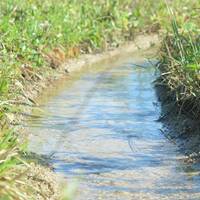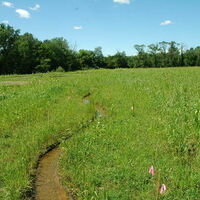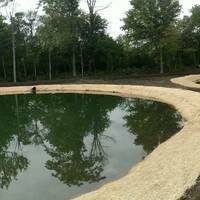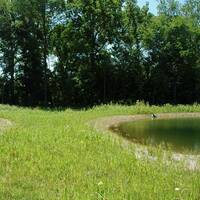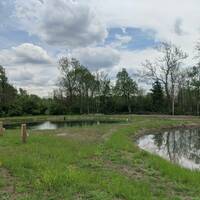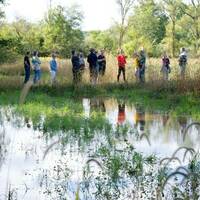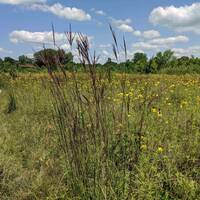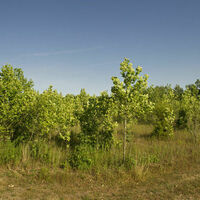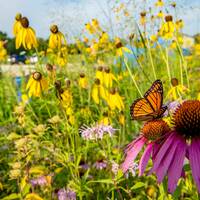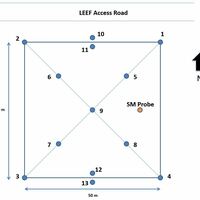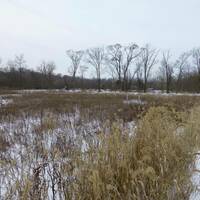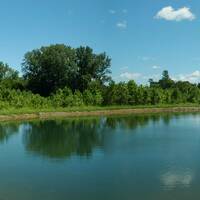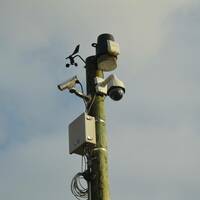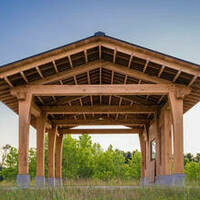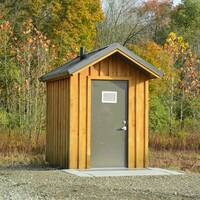Experimental Facilities
The Notre Dame Linked Experimental Ecosystem Facility (ND-LEEF) is available to researchers from the Notre Dame community, other academic institutions, and industry. The facility offers a variety of aquatic and terrestrial ecosystems as well as dedicated space mesocosm studies:
Linked Experimental Watersheds
ND-LEEF currently has four experimental watersheds which contain:
Streams
Each stream is composed of an upper and lower reach, each reach is 60 m long. At the end of the upper reach, water can be diverted into the pond or flow directly to the lower reach. The lower reach can be fed with water directly from the upper reach or through the discharge of the pond. The stream substrate is gravel and the channel width is 0.4 m. Stream flow can be adjusted between 0 and 22 L/sec. Please note, the lower streams and watersheds three and four can be supplied with water directly from the reservoir as well as from the upper stream or the pond.
Ponds
30 m diameter, 2 m maximum depth, 1:3 sloped edges. Ponds can be fed water by the upper stream reach and have water discharged to lower stream reach or ponds can be operated independently of streams with water being fed directly from the reservoir and being discharged directly to wetland. Plastic pond liners are covered with 30.5 cm of sand.
Wetlands
12 m x 30 m- All water flowing through the experimental ecosystems flows through a constructed wetland before being discharged into an existing drainage channel and eventually flowing to the St. Joseph River. The water level within each wetland is controllable using an adjustable weir, allowing researchers to manipulate the saturation of the wetland sediment.
Terrestrial Research Areas
ND-LEEF has several areas where terrestrial research can be conducted. There is a 0.56 ha dedicated terrestrial research area. The terrestrial research area consists of an “old-field” type plant community with all woody vegetation removed from the site in the spring of 2013. In addition to the dedicated research areas, there is also 2.4 ha of restored prairie (seeded fall 2012 and spring 2013) and approximately 8 ha of “old field” community with woody vegetation (sycamore). 110 v electric power and potable water are available at the dedicated terrestrial research area.
Shallow Groundwater Well Array
The well array consists of 13 wells and 1 soil moisture probe. Wells 1-9 are monitoring wells that reach about 20 feet below the ground surface. Wells 10 and 13 are piezometers that reach about 20 feet below the ground surface. Wells 11 and 12 are piezometers that reach about 10 feet below the ground surface.
Mesocosm Research Area
ND-LEEF has a 27 m x 40 m gravel pad dedicated to mesocosms scale research projects. 110 v electric power and potable water are available at the mesocosms research area.
Additional Resources
Need more Information?
Please contact Brett Peters, ND-LEEF assistant director, to learn more about the facility.


